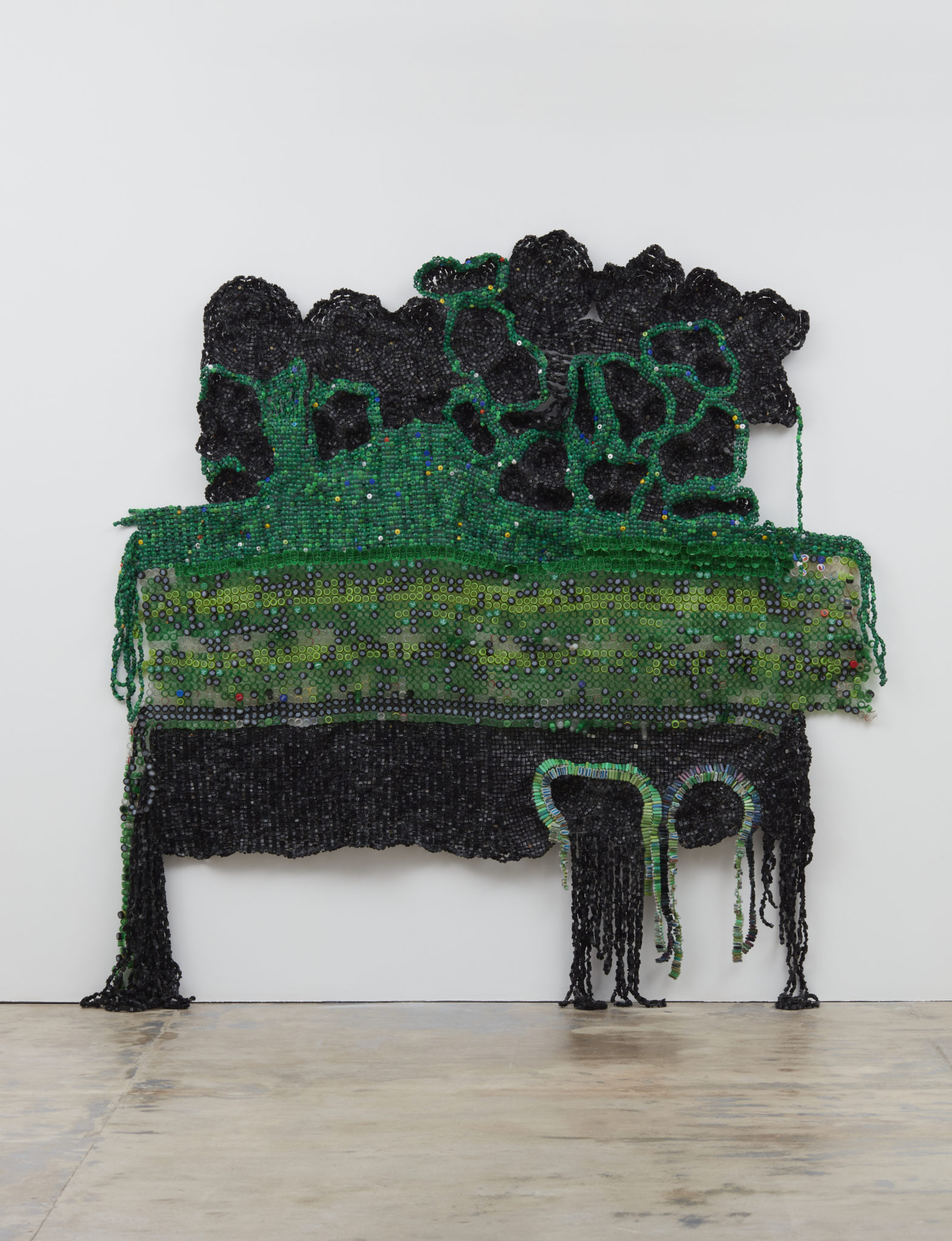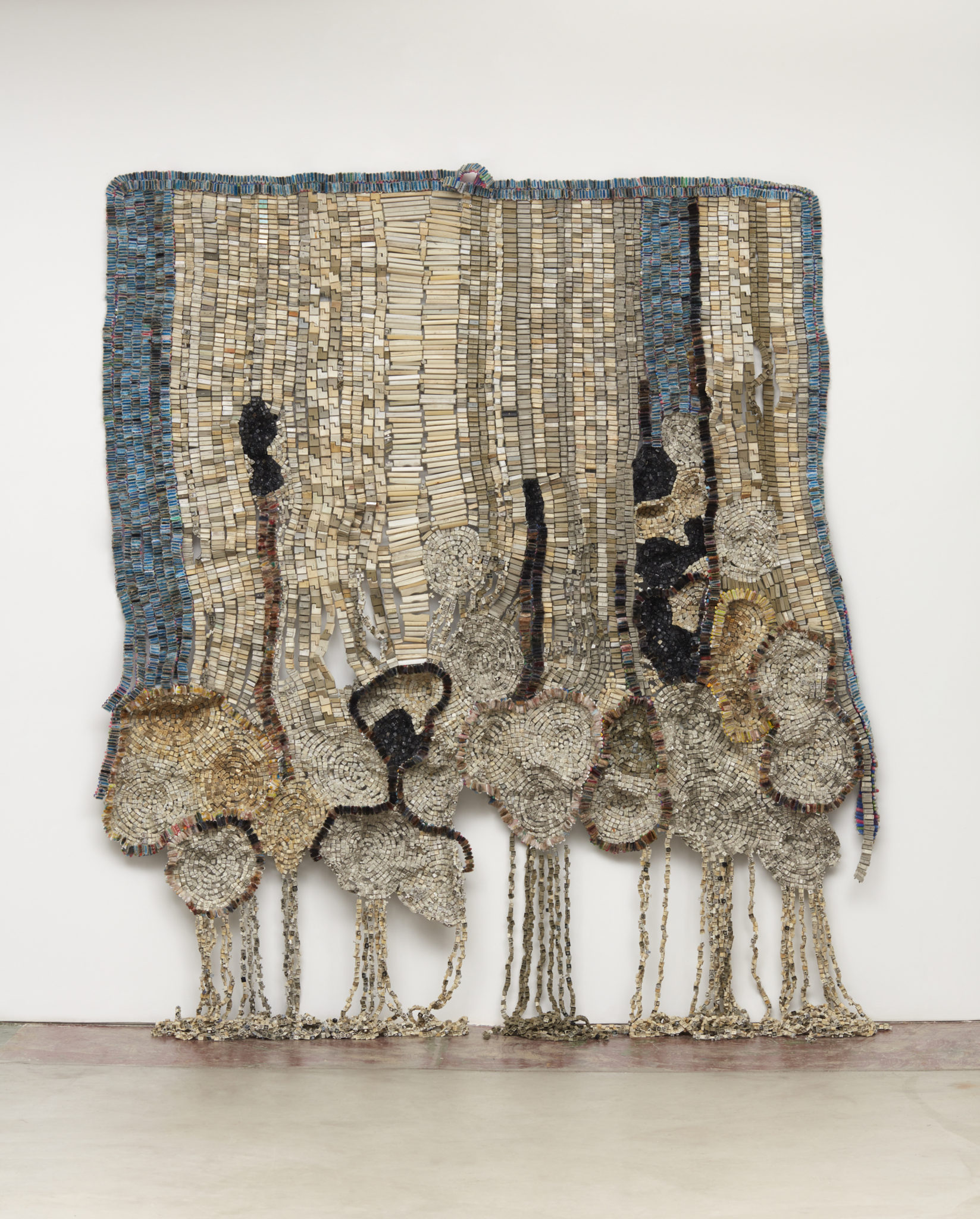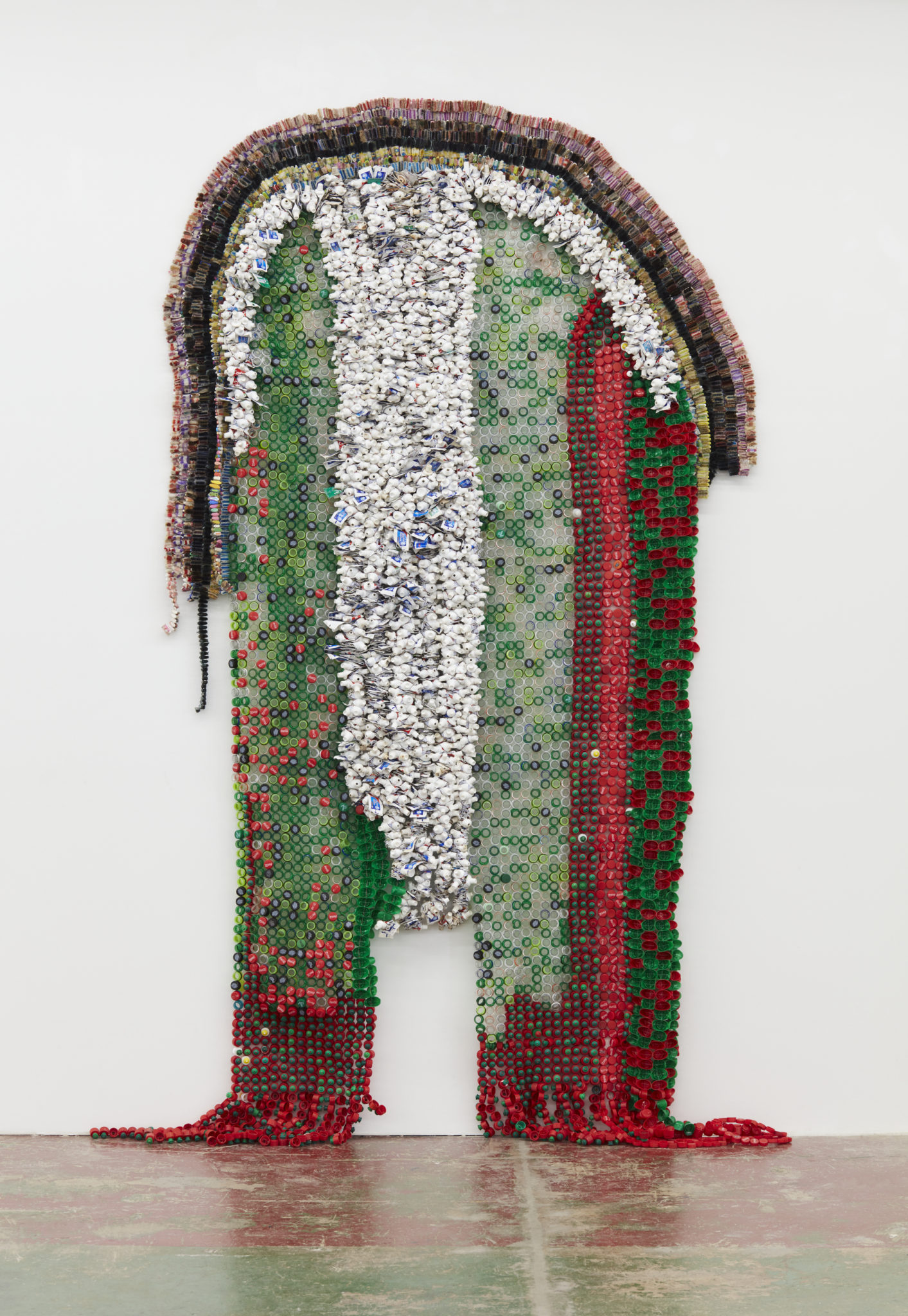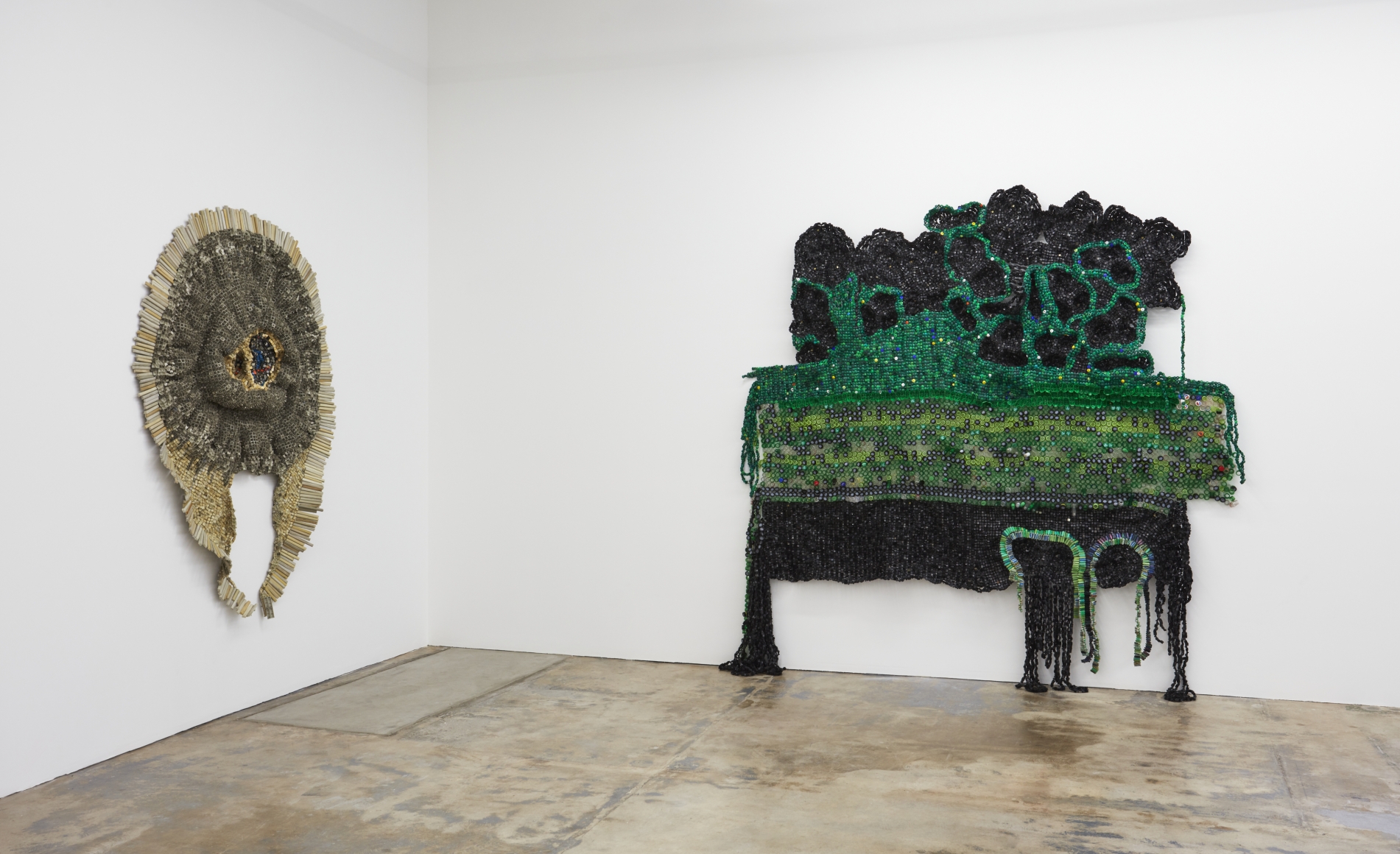Moffat Takadiwa mines Zimbabwe’s landfills for materials. These landfills contain boundless amounts of plastic trash which Takadiwa collects, cleans, sorts and then uses in the creation of his magnificent assemblages. Prominent in his woven wall-based works are bottle tops, toothbrush bristles and keyboard keys in a wide assortment of shapes and colors. The works engage with issues of cultural identity and the environment while calling attention to the proliferation of plastic waste from America and other countries that ends up in landfills worldwide. Although Takadiwa’s works appear as expansive abstractions, they take their point of departure from traditional Zimbabwean textiles and he acknowledges this rich history and legacy as inspiration in the creation of his works.

Moffat Takadiwa, The Occupation of Land, 2019, 120 x 144 x 7 in, found computer keys, toothbrushes, and plastic bottle tops. Courtesy of Nicodim Gallery.
The titles of Takadiwa’s works reference the African landscape as well as the source of the detritus. For example, The Space Bar, (all works 2019) alludes to the key on the computer that is larger than the others and is not identified with a letter. When pressed, it enters a blank space. Within the 118 x 106 inch work, Takadiwa strings together different length pieces of space bars to create columns while also composing circles of nonsense language using the disparate letters pried from a range of types and colors of computer keyboards. The massive plastic tapestry is bordered by strips of blue-toned bristles from the tops of used toothbrushes. The finished works are never contained as their ragged edges dangle to the floor. It is surprising how intricate and beautiful this entanglement of forms becomes. The relationship between the circles and the rows is a metaphor for order and disorder.

Moffat Takadiwa, The Space Bar, 2019, 118 x 106 x 9 in, found computer keys, toothbrushes. Courtesy of Nicodim Gallery.
The works are like quasi-landscapes that map unidentified territories. Green bottle nozzles intertwine with black keys in The Occupation of Land, suggesting pathways through the environment. In Land of Coca-Cola and Colgate, Takadiwa is more direct. Rolled Colgate toothpaste tubes suggesting the shape of a white robe are centered in the composition. It is flanked by red and green bottle-tops, many of which are labeled Coca-Cola. The varying thicknesses and textures of strung together objects creates an uneven surface from which a human shape appears to emerge and hover.

Moffat Takadiwa, Land of Coca-Cola and Colgate, 2019, 137 x 80 x 6 in, found toothpaste tubes, toothbrushes,
and mixed plastic caps. Courtesy of Nicodim Gallery.
Without a doubt, Takadiwa’s process is time-consuming as each finished piece contains thousands of plastic parts. He obsessively trolls through landfills collecting these discarded elements, then sorts through and organizes them by type and color for future use. Takadiwa rarely anthropomorphizes his clusters of shapes, rather the human presence is evoked through the materials and the volume of waste generated, as if to say, I am making a collective portrait without defining an individual. The impact of Takadiwa’s forms is undeniable. The pieces resonate visually as well as conceptually as they are rooted in Zimbabwean history and hardship, but they also celebrate the possibilities of making something lasting and positive out of the ever-growing mass of global waste.
Nicodim Gallery
1700 S Santa Fe Ave #160, Los Angeles, CA 90021
September 7 – October 19, 2019


